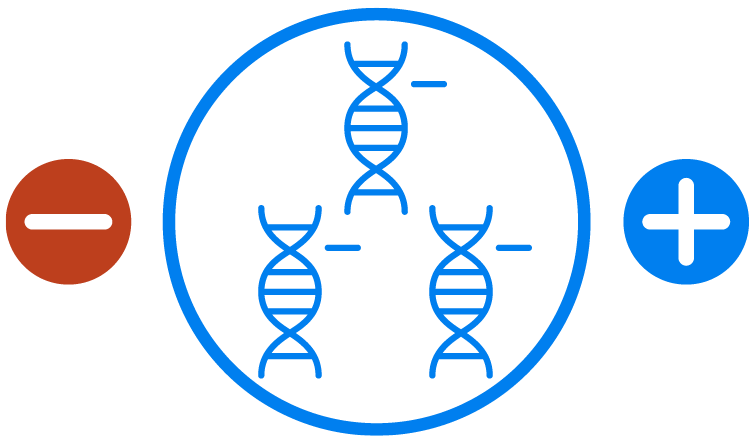The Problem With Traditional Nucleic Acid Extraction Methods
Column, bead, and precipitation-based kits used for extracting nucleic acids all follow the same fundamental workflow.
Cellular lipid membranes are broken down through the use of detergents, releasing proteins and nucleic acids into a solution. Proteases cleave proteins and strong salts, termed chaotropic salts, will further denature them along with dehydrating molecules.

Watch: Traditional Nucleic Acid Extraction Workflow

Isotachophoresis is an Innovative Approach to Nucleic Acid Purification
Charge is a fundamental attribute of any biological molecule; in solution, it can be used not only to separate molecules, but also to concentrate and focus them.
Standard separation techniques commonly rely on multiple analyte properties, such as differences in charge, size, solubility, and/or binding affinity, in addition to a solid surface. Isotachophoresis separates and focuses charged molecules in solution solely based on their ionic mobility.
Watch: Isotachophoresis Nucleic Acid Extraction Workflow
How to Implement Isotachophoresis in Three Steps
1) Biological samples are gently lysed and added to the Bionano Ionic® Fluidic Chip.

2) An electric field is then applied to the chip and the nucleic acid is isolated in its natural, native form.

3) The nucleic acid is not denatured or dehydrated, and there is no binding to, or stripping from, fixed surfaces.

The result is a higher yield of pure nucleic acid that is less fragmented and free from bead or wash buffer contamination.